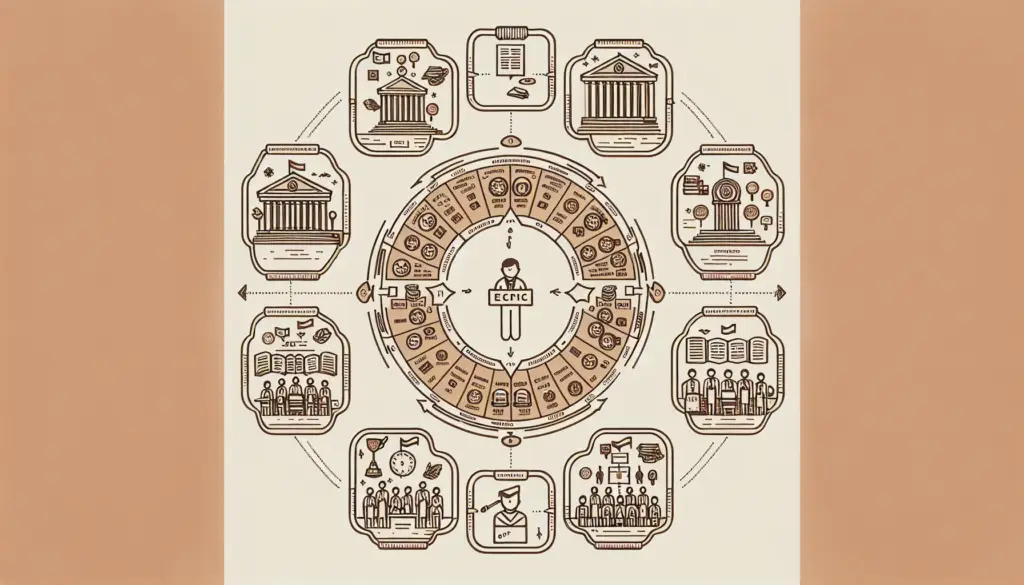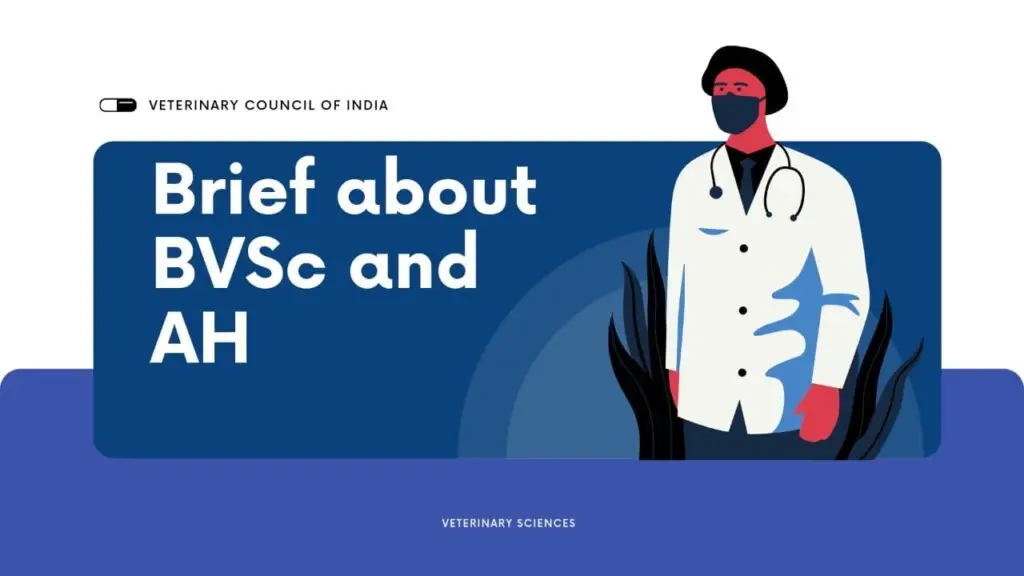IAS Exam Pattern

Understanding IAS Exam Pattern
The journey to becoming an Indian Administrative Service (IAS) officer involves understanding the intricate details of the IAS exam pattern. This is especially crucial for veterinary doctors aiming to clear this prestigious examination. The IAS exam, conducted by the Union Public Service Commission (UPSC), consists of different stages that candidates must clear sequentially.
Prelims vs. Mains
The IAS exam comprises two primary stages: the Preliminary Exam (Prelims) and the Main Examination (Mains). Each stage has distinct characteristics and serves unique purposes within the broader examination structure.
Preliminary Exam (Prelims): The Prelims serve as a screening test to filter candidates for the Mains. It consists of two objective-type papers:
General Studies Paper I
General Studies Paper II (CSAT)Both papers are crucial, requiring a comprehensive understanding of varied subjects. Candidates must prepare for both stages simultaneously (Indian Express)
Main Examination (Mains): The Mains is a written examination designed to assess the depth of candidates’ knowledge. This stage includes nine papers, eight of which are subjective in nature, and one is essay-based:
Paper A: Indian Language
Paper B: English
Paper I: Essay
Paper II: General Studies I
Paper III: General Studies II
Paper IV: General Studies III
Paper V: General Studies IV
Paper VI & VII: Optional Papers I and II
Optional Paper Importance
The inclusion of optional papers in the Mains examination holds significant weight in determining a candidate’s final score. This makes the selection of suitable optional subjects especially vital for veterinary doctors, who might consider choosing a subject aligned with their academic background or interest areas.
- Optional Paper Weightage: The two optional papers (Paper VI and Paper VII) collectively contribute 500 marks to the final score. This substantial weight underscores the necessity of a considered selection and thorough preparation.
| Paper | Marks Each | Total Marks |
|---|---|---|
| Optional Paper I (Paper VI) | 250 | 500 |
| Optional Paper II (Paper VII) | 250 | 500 |
Choosing an optional subject that aligns with one’s expertise can provide a strategic advantage. For instance, veterinary doctors can leverage their extensive knowledge in their chosen field to potentially score higher.
Understanding the IAS exam structure, particularly the Prelims and Mains, and recognizing the importance of the optional papers, can help veterinary doctors strategize their preparation effectively. For more detailed breakdowns of each stage, visit our section on UPSC exam syllabus. For those seeking to master current affairs relevant to the exam, see current affairs for IAS or review IAS previous year question papers to better understand the question patterns. If pursuing IAS aspirations, prepare thoroughly for every aspect of the examination to maximize chances of success.
Marks Distribution in Mains
Understanding the marks distribution in the UPSC Mains is crucial for veterinary doctors aiming to crack the IAS exam. The Mains consist of nine papers, each designed to test different capabilities and knowledge areas.
Nine Paper Format
The UPSC Mains exam comprises nine papers held in distinct examination sessions or slots, thus making it an extensive and detailed examination process. Out of these nine papers, two are qualifying in nature, and the marks of the remaining seven are counted towards the final score (Indian Express).
Here’s a structured breakdown of the nine papers:
| Paper No. | Subject | Marks | Qualifying/Nature |
|---|---|---|---|
| 1 | Essay | 250 | Counted |
| 2 | General Studies I | 250 | Counted |
| 3 | General Studies II | 250 | Counted |
| 4 | General Studies III | 250 | Counted |
| 5 | General Studies IV | 250 | Counted |
| 6 | Optional Paper I | 250 | Counted |
| 7 | Optional Paper II | 250 | Counted |
| 8 | Language Paper A (Indian Language) | 300 | Qualifying |
| 9 | Language Paper B (English) | 300 | Qualifying |
For more information on the syllabus of each paper, refer to our detailed section on the UPSC exam syllabus.
Optional Paper Weightage
The optional papers hold significant weight in the final merit list. Candidates can choose subjects related to their undergraduate studies or any other area of interest. The importance of these papers lies in their ability to distinguish candidates in the final rankings (Indian Express).
Each optional subject consists of two papers, with each paper carrying 250 marks. Therefore, the total weightage of the optional subject is 500 marks. Choosing the right optional subject can greatly impact the candidate’s overall score and ranking.
| Optional Papers | Marks Each | Total Marks |
|---|---|---|
| Optional Paper I | 250 | 250 |
| Optional Paper II | 250 | 250 |
| Total | 500 | 500 |
More details on how to select the best optional paper for personal strengths can be found in our discussion on IAS previous year question papers.
To excel in the UPSC Mains, veterinary doctors must familiarize themselves with the exam structure and meticulously prepare for each section. Stay updated with current affairs for IAS to enhance your general studies and choose an optional subject that aligns with your strengths and interests.
Importance of IAS Interview
The IAS Interview, also known as the Personality Test, is the final stage of the UPSC Civil Services Examination (CSE). This stage is crucial in determining a candidate’s placement in the final merit list, particularly for those in specialized fields like veterinary doctors.
Impact on Merit List
The IAS Interview round can significantly impact a candidate’s final ranking. This phase carries considerable weight and can alter the outcome even for candidates who have performed exceptionally in the written exams (Indian Express).
| Stage | Total Marks | Percentage Contribution |
|---|---|---|
| Mains (Written Exams) | 1750 | 87.5% |
| Interview | 275 | 12.5% |
The interview can either bolster a candidate’s position in the merit list or, conversely, result in a lower ranking if they do not perform well. Therefore, preparing adequately for the interview is essential for success.
Evaluation Criteria
The evaluation criteria for the IAS Interview are multifaceted, focusing on a range of qualities that highlight a candidate’s suitability for a career in civil services. The interview board assesses candidates on various fronts (Vajiram & Ravi):
- Mental Alertness: Ability to think quickly and respond accurately.
- Clear Exposition: Clarity in expression and communication skills.
- Critical Assimilation: Capacity to understand and analyze information critically.
- Balance of Judgment: Ability to make balanced and fair decisions.
- Leadership Skills: Demonstrating initiative and leadership.
- Moral Integrity: Honesty and ethical considerations in decision-making.
| Criteria | Description |
|---|---|
| Mental Alertness | Quick and accurate thinking |
| Clear Exposition | Clarity in communication |
| Critical Assimilation | Analytical abilities |
| Balance of Judgment | Fair decision-making |
| Leadership Skills | Initiative and leadership |
| Moral Integrity | Ethical considerations |
Candidates must display these qualities to convince the interview board of their readiness for the responsibilities of the Indian Administrative Service. Preparation can be guided by reviewing ias interview questions and keeping current with current affairs for ias.
Understanding the importance of the IAS Interview and the criteria on which one is evaluated can significantly enhance a candidate’s preparation strategy, ultimately aiding in their journey to success.
Exam Duration Comparison
Navigating the Indian Administrative Service (IAS) exam can be overwhelming, especially for veterinary doctors who are balancing their professional commitments. Understanding the duration of each phase of the IAS exam helps in better time management and preparation.
Prelims Duration
The UPSC Preliminary Exam, commonly referred to as Prelims, consists of two objective-type papers. Each paper is crucial in determining a candidate’s eligibility for the Mains.
| Paper | Duration | Description |
|---|---|---|
| General Studies Paper I | 2 hours | General awareness and current affairs |
| General Studies Paper II | 2 hours | Aptitude test (CSAT) |
Each paper has a duration of two hours, making time management essential. For more in-depth information on the Prelims syllabus, refer to our UPSC exam syllabus.
Mains Duration
The Mains examination, on the other hand, is more extensive and requires an in-depth understanding of various subjects. It comprises nine papers, each having a duration of three hours.
| Paper | Duration | Description |
|---|---|---|
| Paper A (Compulsory Indian Language) | 3 hours | Language skills |
| Paper B (English) | 3 hours | English language skills |
| Essay | 3 hours | Essay writing |
| General Studies I | 3 hours | Indian heritage and culture, history, and geography |
| General Studies II | 3 hours | Polity, governance, international relations |
| General Studies III | 3 hours | Technology, economic development, biodiversity |
| General Studies IV | 3 hours | Ethics, integrity, and aptitude |
| Optional Paper I | 3 hours | Specific subject chosen by the candidate |
| Optional Paper II | 3 hours | Specific subject chosen by the candidate |
Preparation and time allocation for each paper play a significant role in a candidate’s success. For more details on previous years’ questions, check out our IAS previous year question papers.
Understanding the time structure of both the Prelims and Mains examination not only aids in better preparation but also in devising a strategy to tackle the exam efficiently. For more insights on specific IAS interview questions, visit IAS interview questions.
Eligibility and Notification
Age Limit Criteria
Veterinary doctors aspiring to crack the IAS exam and contribute to public service must first understand the age limit criteria set by the UPSC. Meeting the age eligibility is crucial for applying for this prestigious exam.
- The age limit for the general category candidates is 21 to 32 years.
- For OBC category candidates, the maximum age limit is 35 years.
- SC/ST candidates benefit from an age relaxation, allowing them to appear for the exam until 37 years of age.
- Disabilities (General/EWS/OBC/SC/ST) have varied relaxations ranging from 10 to 15 years based on their category.
These age limits are applied based on specific birth date cutoffs. For the UPSC CSE 2023, candidates should have been born not earlier than August 2, 1992, and not later than August 1, 2003 (Anuj Jindal).
| Category | Age Limit |
|---|---|
| General | 21-32 years |
| OBC | 21-35 years |
| SC/ST | 21-37 years |
| Disabilities | 21-42 years |
Educational Qualifications
Educational qualifications are another key aspect of the IAS eligibility criteria. Aspiring veterinary doctors must possess a minimum educational qualification to apply for the IAS exam.
- The candidate must hold a bachelor’s degree from a government-recognized university.
- Degrees from distance education and open universities are acceptable as long as they are UGC-recognized.
- Specialists like veterinary doctors holding a graduate degree in their field are eligible to sit for the IAS exam.
It should be noted that merely passing the 12th grade is not sufficient for application; a valid undergraduate degree is required (Anuj Jindal). Understanding these educational requirements is imperative for veterinary professionals aiming to join the civil services.
For more detailed insights into the UPSC exam syllabus and IAS interview questions, be sure to check our comprehensive guides to better prepare yourself for the exam journey.
Language Selection in UPSC Exam
For veterinary doctors and other aspirants aiming to crack the IAS examination, language selection is an important consideration. This section delves into the available language options and the importance of the language medium in the UPSC Civil Services Examination.
Language Options
Candidates have the flexibility to choose the language in which they wish to write the UPSC Civil Services Examination. According to Liberty Group, candidates can opt for English, Hindi, or any of the 22 scheduled languages recognized by the Indian Constitution. These languages include:
- Assamese
- Bengali
- Gujarati
- Tamil
- Urdu
The selected language will be the medium for answering the papers in the Main Examination. However, it’s crucial to note that the General Studies Paper (Paper 1) of the Preliminary Examination will be conducted in both English and Hindi, allowing candidates to attempt the paper in either language (Liberty Group).
Language Medium Importance
The choice of language medium can significantly impact an aspirant’s performance. Candidates who opt for a regional language other than English or Hindi will receive a bilingual question paper. This allows them to attempt the exam in the selected regional language while also providing the questions in English (Liberty Group). Additionally, those who choose a regional language will receive a translated version of the General Studies Paper-II (CSAT) in the selected language. It’s essential to note that the CSAT paper is qualifying in nature, requiring only 33% marks to qualify.
Here is a table summarizing the language options and their implications:
| Examination | Language Options | Bilingual Question Paper | Notes |
|---|---|---|---|
| Preliminary (General Studies Paper 1) | English, Hindi | No | Conducted in English and Hindi |
| Preliminary (CSAT) | Regional Languages, English, Hindi | Yes | Qualifying in nature |
| Main Examination | English, Hindi, Regional Languages | Yes | Selected language as medium |
Selection of a suitable language aligns with the aspirant’s comfort level and can enhance performance. For further guidance on preparing for the examination, explore our articles on UPSC exam syllabus and IAS previous year question papers.






Responses